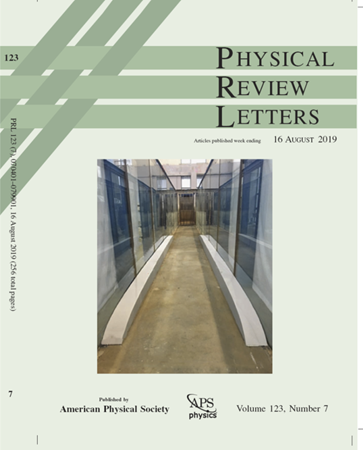片上验证量子计算与离子阱量子处理单元
IF 9
1区 物理与天体物理
Q1 PHYSICS, MULTIDISCIPLINARY
引用次数: 0
摘要
我们提出了一种加密安全验证和量子计算基准测试的新方法,并在离子阱量子计算机上展示了我们的方法。不像以前的加密安全验证协议,通常需要在客户端和服务器之间进行量子通信,我们的方法完全在芯片上实现。这消除了对量子客户端的需求,并显著提高了实用性。我们执行断层扫描来证明额外需要的假设,即噪声独立于用于准备服务器单量子比特状态的秘密。我们量化了可能由剩余秘密依赖引起的可靠性误差。我们在20量子位量子H1-1离子阱量子处理单元上展示了我们的协议,使用量子位测量和重置来构建多达52个顶点的测量模式。据我们所知,这是迄今为止进行的最大的基于测量的量子计算。本文章由计算机程序翻译,如有差异,请以英文原文为准。
On-Chip Verified Quantum Computation with an Ion-Trap Quantum Processing Unit
We present a novel approach to cryptographically secure verification and benchmarking of quantum computing, demonstrating our approach on an ion-trap quantum computer. Unlike previous cryptographically secure verification protocols, which typically require quantum communication between client and server, our approach is implemented entirely on chip. This eliminates the need for a quantum capable client, and significantly enhances practicality. We perform tomography to justify the additionally required assumption that the noise is independent of the secret used to prepare the server’s single-qubit states. We quantify the soundness error that may be caused by residual secret dependencies. We demonstrate our protocol on the 20-qubit Quantinuum H1-1 ion-trap quantum processing unit, using qubit measurements and resets to construct measurement patterns with up to 52 vertices. To our knowledge, these are the largest verified measurement-based quantum computations performed to date.
求助全文
通过发布文献求助,成功后即可免费获取论文全文。
去求助
来源期刊

Physical review letters
物理-物理:综合
CiteScore
16.50
自引率
7.00%
发文量
2673
审稿时长
2.2 months
期刊介绍:
Physical review letters(PRL)covers the full range of applied, fundamental, and interdisciplinary physics research topics:
General physics, including statistical and quantum mechanics and quantum information
Gravitation, astrophysics, and cosmology
Elementary particles and fields
Nuclear physics
Atomic, molecular, and optical physics
Nonlinear dynamics, fluid dynamics, and classical optics
Plasma and beam physics
Condensed matter and materials physics
Polymers, soft matter, biological, climate and interdisciplinary physics, including networks
 求助内容:
求助内容: 应助结果提醒方式:
应助结果提醒方式:


